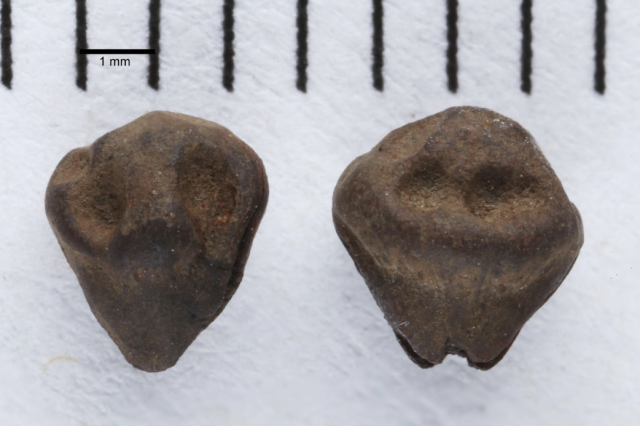Shade, Then and Now
Discover the changing tree line of L.A. through the lens of La Brea Tar Pits fossils—and the evolving presence of shade in our warming climate
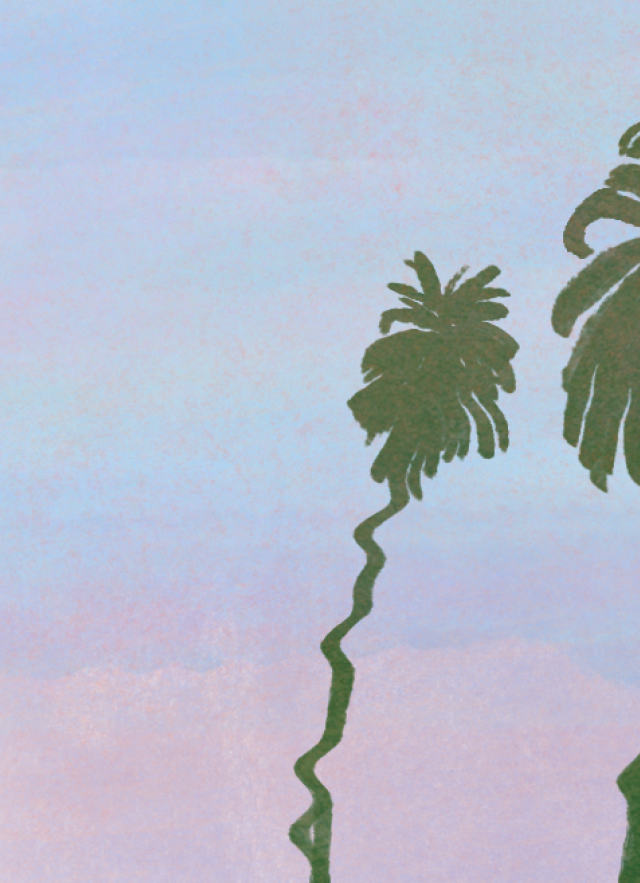
Published August 6, 2025
In sunny California, shade is always a hot commodity, but during extreme heat, it becomes a necessity. The La Brea Tar Pits tell the story of how shade has been a resource that has changed over time. (Hint: there’s less of it.) Our scientists share insights on how animals cool off and how we can help them do so.
One of the best plants to study from the Tar Pits is Juniper. In fact, the most abundant specimens from the Tar Pits are Juniper seeds. And the growth rings of Juniper wood—perfectly preserved in the asphalt—can tell us about different conditions in which the plant lived. From this information, scientists can trace a direct link between warming conditions to the change in the ecosystem from coniferous forest woodland environment to chaparral with arid taxa (plants and animals that adapted to live in dry conditions). As temperatures warmed, the landscape became more fire-prone, and there is a connection between this change in environment and the presence of larger animals such as the mastodons, saber-toothed cats, and dire wolves that once thrived in the Los Angeles basin.
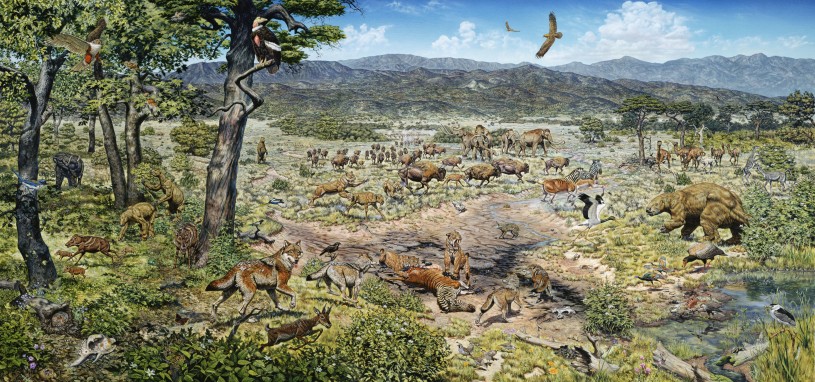
Trees require water. Once the amount of water available changes, the natural shade changes. Around 14,700 years ago, the climate in Los Angeles began turning warmer and drier. Trees died and herbivores began to disappear, creating an abundance of dry fuels and less food for hungry carnivores. By 12,900 years ago, the Southern California landscape had changed entirely. After drought and fires, vegetation went from shady woodland to open grassland and the modern, fire-adapted chaparral we see today. Gone also were the great beasts—bison, horses, camels, lions, saber-toothed cats, dire wolves, and giant ground sloths that thrived in a forested landscape. The largest predators in the region became mountain lions, coyotes, and humans. This deforestation reduced the amount of tree cover in the area by half, and in the millennia since human development has reduced our shade resources even further.
Trees like these no longer grow natively in our area. But, just as human activity has depleted trees, so too can humans cultivate them. In the Ice Age Garden at La Brea Tar Pits, scientists have recreated L.A.’s prehistoric landscape. The garden is divided into four ecological systems: Coastal Sage, Riparian, Mixed Evergreen/Redwood Forest, and Chaparral and features the native plants of the time, including pine, sage, and buckwheat and shady box elder, willow, sycamore, and Monterey Cypress and Redwood trees. You can create your own Ice Age garden with many of these same plants.
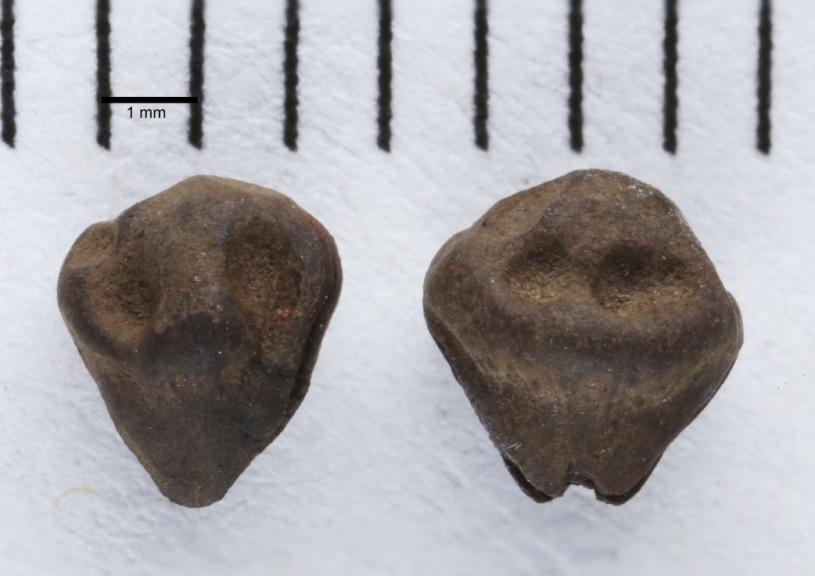
In 2013, the Nature Gardens opened at the Natural History Museum. By replacing a parking lot with 600 species of native and nonnative plants that thrive in Southern California's now semi-arid Mediterranean climate, the Museum turned hardscape into softscape, strengthening the land with improved natural drainage, plants that absorb CO₂, and increased shade. This increase in shade was a strategic project, with large trees already in the area preserved in the design and new, mature trees planted to bring immediate shade. This 3.5-acre space, designed in collaboration with Mia Lehrer and Associates, is a living exhibition of L.A. wildlife and in the years since it opened, we’ve seen a dramatic increase in local critters moving in, especially birds, butterflies, lizards, and squirrels, all of whom need to take a break in the shade on hot summer days. Efforts to maintain and expand this thriving urban canopy are ongoing, with several new tree additions in the new Commons Plaza on the South Side of the museum and constant care, and, if necessary, replacement of existing trees. Shade infrastructure is always maintained and improved whenever possible.
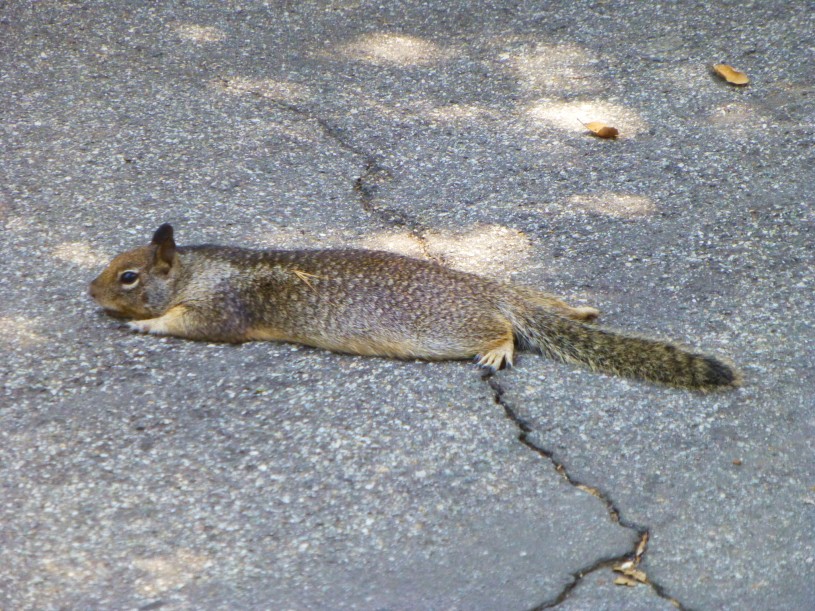
People and animals feel cooler in the shade, not because the air around them is cooler, but because shade reduces sun exposure on our skin and reduces radiant heat from surfaces blocked from the sun’s rays. The ground under a shady tree is an important tool for some animals, who cannot sweat to cool themselves. Perhaps you’ve seen your dog stretch out on the cool tile of a kitchen floor, belly flat against the ground. This adorable pose is called “splooting.” Many animals, including rabbits and the abundant squirrels in the Nature Gardens, adopt this pose to maximize their contact with the cool surfaces and transfer heat away from their bodies.
For humans, shade is a public health issue, and in urban areas, there is significant disparity. Reportedly, South Los Angeles, where NHM is located, is 13% covered by tree canopy compared to 21% in other parts of Los Angeles. Community efforts such as the USC Urban Trees Initiative and Tree People’s Community Forestry Projects are challenging this disparity and improving shade in Los Angeles. Wherever you live, you can help increase shade by supporting community groups or even using their guides to plant shade trees.
